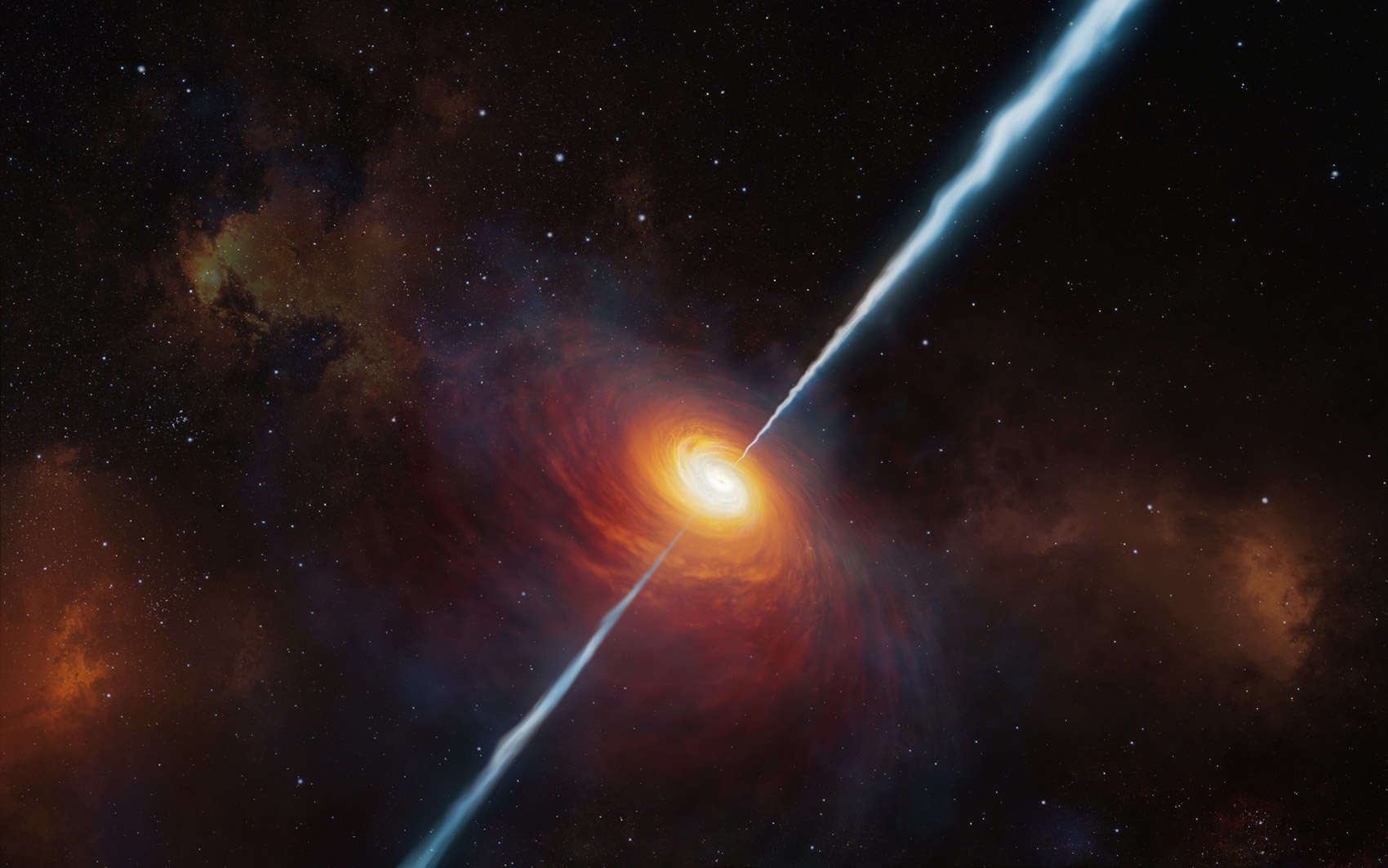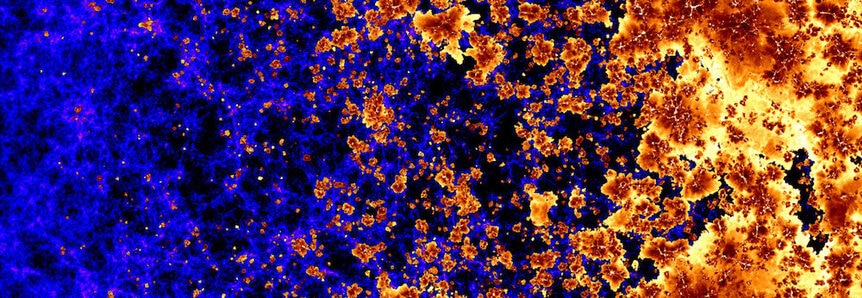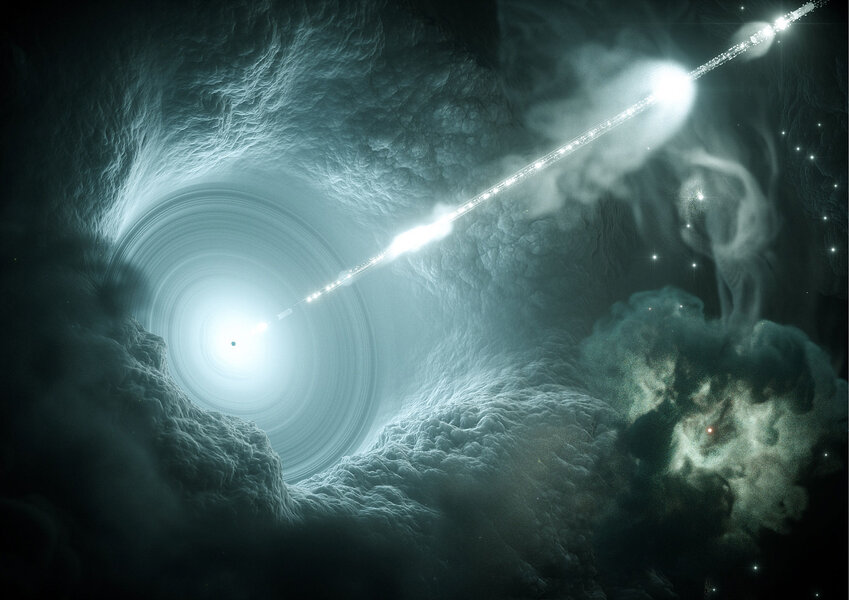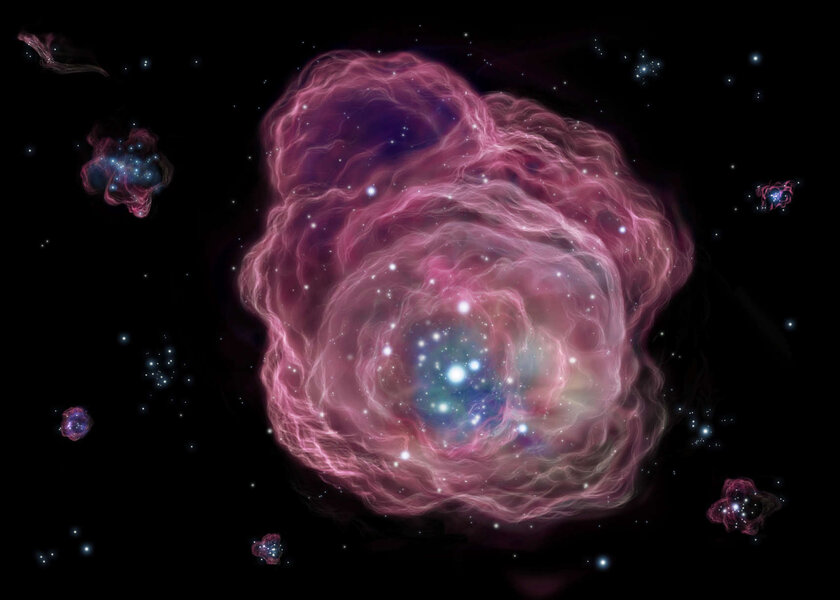Create a free profile to get unlimited access to exclusive videos, sweepstakes, and more!
What reionized the Universe, and when?
New observations may tell us when the cosmos became transparent.

When did the Universe first become transparent?
It’s a weird question, but an important one. The Universe started off opaque, but became transparent some time after, and remains that way even today. It’s literally why we can see distant objects in the sky, and in a more existential sense that moment of cosmic transparency affected how galaxies behaved, how stars formed, and more. We’re here because of it, and it has profound implications for objects we like to study, so answering the question is something a lot of astronomers want to do.
An international team of astronomers may have finally answered the question: Roughly 1.1 billion years after the Big Bang, 12.7 billion years ago. That’s a couple of hundred million years later than previous estimates, which has some pretty interesting implications [link to paper].
Right after the Big Bang, like within minutes after it, our whole Universe was in a hot, dense state*, and all the matter in it was ionized: Any hydrogen or helium nuclei didn’t have electrons bound to them. Any time an electron tried, some photon, a particle of light, would hit it and knock it off. All the light was extremely high-energy back then, and far more than capable of keeping things ionized.
If you were in this miasma — and in a sense you were, since everything in the Universe was — it would look completely opaque to you, because matter was so dense.
Then, about 400,000 years later, something amazing happened: As the Universe expanded it cooled, and eventually the average photon lacked the energy to ionize hydrogen. For the first time electrons combined with protons and stayed that way, making neutral hydrogen. The term for this is confusing; when an electron and proton join up we call it recombination, so this event is called Recombination, despite the fact that for most atoms it was the first they had combined.
Even though the density of the Universe was decreasing as it expanded, neutral hydrogen is very good at absorbing visible light, the wavelengths of light we see, so the cosmos was still opaque. We call this era the Dark Ages.
It would stay that way for a long, long time, until new objects formed that could blast out ultraviolet light. When these were born, they once again ionized the hydrogen in space, but this time things were different: The Universe was low enough density that the photons could travel a long way without getting absorbed. Suddenly, space was transparent, and stayed that way. Even today most gas is ionized — technically called a plasma — and we can see a long way. This moment in the timeline of the Universe is called reionization.
But when did that happen? There’s a fun way to find out.
As galaxies first coalesced out of the murk, they formed with huge black holes in their cores. Matter would fall into these black holes, piling up in a disk that would get incredibly hot and blast out high-energy ultraviolet light, as well as X-rays and gamma rays. We call galaxies like these quasars, and we can see them for a long long way.
The light from these quasars fights the expansion of the Universe as they get to us, and their wavelengths get stretched out, called redshifting. That means the redshift tells us how far away the quasar is, which in turn tells us how long after the Big Bang we see it. Light travels at a finite speed, so the farther away something is the more it’s redshifted and the farther back in time we see it.
The quasar is so powerful that even if we see it before reionization, it will have ionized the hydrogen immediately around itself, making it possible for the light to get out. If there’s a cloud of hydrogen far enough away from the quasar to still be neutral, and it’s between us and that quasar, it’ll absorb the light from the quasar. We see a wavelength gap in the quasar’s light, and the redshift of that gap tells us how far away that cloud is from us, and more importantly how far back in time we see it.
Clouds that are very far away are neutral, unionized. But then after reionization we suddenly don’t see them anymore; they can’t absorb the quasar’s light.
So in principle we just need to get really good spectra of a bunch of really distant quasars, breaking their light into separate wavelengths. We’ll see lots of absorption at various wavelengths which then goes away at a low enough redshift. That’s when reionization occurred.
In practice this is really, really hard. You need extremely bright quasars, and even then they’re so far away they’re faint. And you need really good spectra, which means a big telescope with long exposures. And you need to account for lots of other issues, like what the structure of the Universe was like back then.
Still, the astronomer team did just this. They observed 25 very distant very bright quasars from the XQR-30 survey, and used archived observation of 42 more from two other telescopes. Looking very carefully at the 67 quasar spectra, they find that the moment in cosmic time when the Universe became transparent was about 1.1 billion years after the Big Bang.
And that’s very interesting! We don’t know exactly what reionized the Universe. It may have been these very quasars, but there was also enough time for supermassive and extremely hot, luminous stars to form as well, and they too could have blasted out UV light, enough to contribute. So was it quasars, or stars, or some combo of both?
The timing can help narrow this down. Previous measurements put reionization at 200 million years earlier, but if this new number is right it leaves a lot of room for a lot more of these first generation stars to form and pitch in. So it may have been both quasars and stars — if you pardon the pun — in combination.
Galaxies were forming around this time, and if these stars were super powerful they could blow gas right out of the galaxies, affecting their evolution. So knowing when reionization occurred helps us understand when these stars were around and what they may have done to their local environments.
I’ll remind you that you live in a galaxy, on a planet around a star that can directly trace their lineages back to this time. So the fact that we exist at all depends in part on reionization, what caused it, and when.
You can see why we’d like to know the answer. And we may finally have it.
Of course, more observations are better. More models of cosmic structure will help in nailing down this number more accurately too — and we may also be able to figure out how long reionization took. A million years? Ten, fifty, a hundred? Bigger telescopes with better cameras will almost certainly play a role in figuring that out.
We are among the first humans to understand how the Universe came to be and what happened to it, in detail, after that moment. It took 13.8 billion years for the Universe to get this far, but I think it’s been worth the wait.
* You can quote me on that.





























